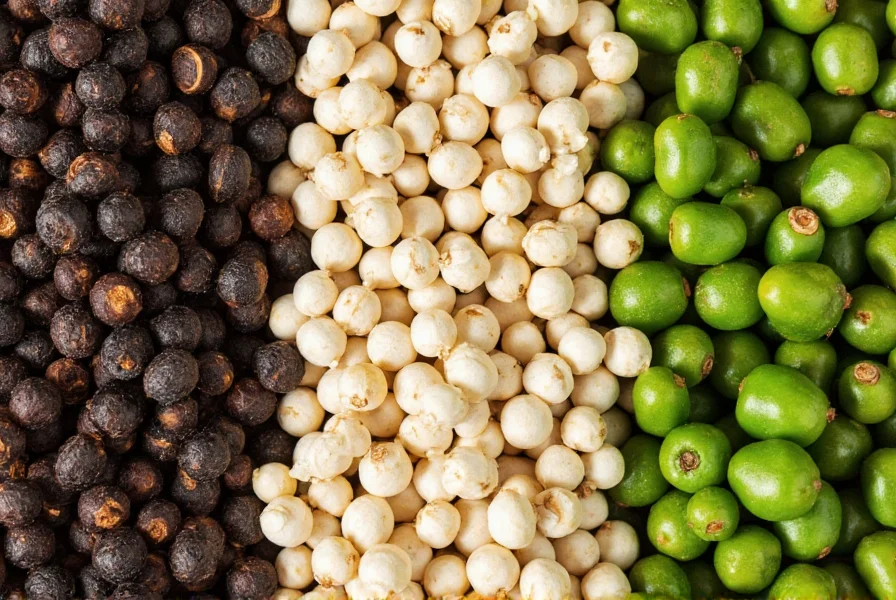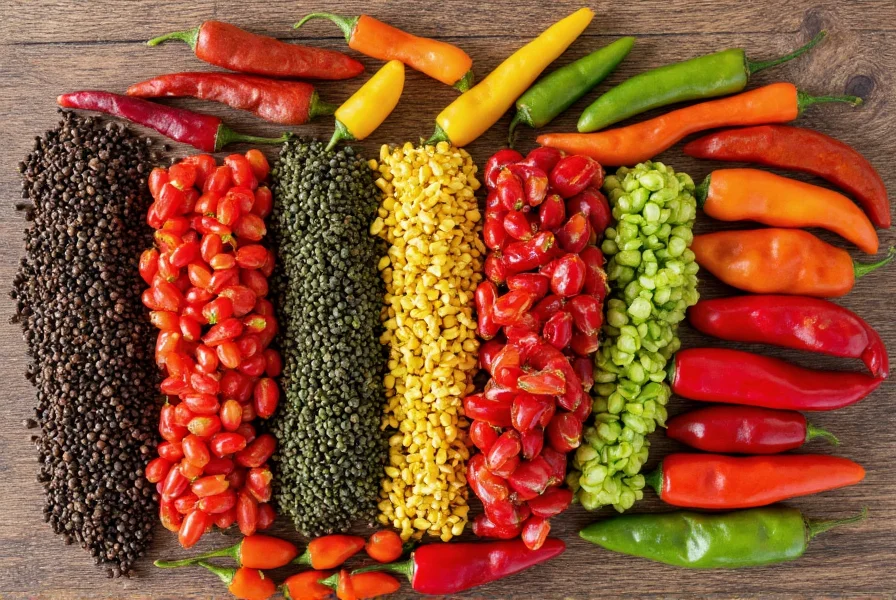Understanding what defines pepper requires distinguishing between two completely different plant families that share the same common name. This confusion dates back to European exploration when Spanish traders misidentified New World Capsicum fruits as variants of the familiar black pepper (Piper nigrum) they'd previously obtained from Asia.
Botanical Classification of Pepper Types
The term "pepper" encompasses two unrelated plant groups that have been conflated in culinary language:
| Pepper Type | Scientific Name | Family | Origin |
|---|---|---|---|
| Black/White/Green Pepper | Piper nigrum | Piperaceae | Southwest India |
| Bell Peppers | Capsicum annuum | Solanaceae | Central/South America |
| Chili Peppers | Capsicum species | Solanaceae | Central/South America |
True Pepper: Piper nigrum Varieties
What many define as "pepper" in strict botanical terms refers exclusively to Piper nigrum, a flowering vine native to the Malabar Coast of India. The same plant produces different pepper varieties based on harvest timing and processing:
- Black pepper - Unripe green berries dried until they shrivel and turn black
- White pepper - Ripe berries with outer layer removed before drying
- Green pepper - Unripe berries preserved through freeze-drying or brining
- Red pepper - Fully ripe berries dried with skin intact

Capsicum Peppers: Bell and Chili Varieties
Despite the shared name, bell peppers and chili peppers belong to the nightshade family (Solanaceae), completely unrelated to Piper nigrum. Christopher Columbus mistakenly called these New World plants "peppers" due to their pungency resembling black pepper.
When you define bell pepper specifically, you're referring to large, sweet Capsicum annuum cultivars that don't produce capsaicin (the compound that makes chili peppers hot). These come in multiple colors (green, red, yellow, orange) representing different maturity stages.
Chili peppers encompass dozens of Capsicum species with varying heat levels measured on the Scoville scale. Common varieties include jalapeños, habaneros, and cayenne peppers.
Historical Context of Pepper Terminology
The linguistic confusion began in the 15th century when Portuguese and Spanish explorers encountered Capsicum fruits in the Americas. Lacking a European term for these pungent new plants, they applied the name "pepper" already used for the valuable Piper nigrum spice from Asia.
This historical mix-up persists today, causing frequent misunderstandings when discussing what defines pepper in culinary, botanical, or commercial contexts. Food scientists and botanists must specify whether they refer to Piper or Capsicum species to avoid confusion.
Culinary Applications and Substitutions
Understanding how to define pepper properly matters in cooking because these plants have distinct flavor profiles and chemical properties:
- Black pepper provides sharp, woody heat from piperine (not capsaicin)
- Bell peppers offer sweet, vegetal notes with zero heat
- Chili peppers deliver capsaicin-based heat ranging from mild to extreme
When a recipe calls for "pepper" without specification, context determines whether it means black pepper (most common in Western cuisine) or a Capsicum variety (more likely in Latin American or Asian recipes). Chefs seeking to define pepper accurately for recipe development must clarify which type they intend.
Nutritional Differences Between Pepper Types
While both pepper categories offer health benefits, their nutritional profiles differ significantly:
- Black pepper - Contains piperine (enhances nutrient absorption), manganese, and vitamin K
- Bell peppers - Extremely high in vitamin C (especially red varieties), vitamin A, and antioxidants
- Chili peppers - Rich in capsaicin (metabolism booster), vitamin C, and carotenoids

Common Misconceptions About Pepper
Several persistent myths surround pepper terminology:
- Myth: All peppers are hot - Reality: Bell peppers contain zero capsaicin
- Myth: Black and red pepper come from different plants - Reality: Same Piper nigrum plant, different ripeness
- Myth: Cayenne pepper is a specific plant - Reality: Refers to dried Capsicum annuum powder, not a unique species
When attempting to define pepper accurately for academic or culinary purposes, recognizing these distinctions prevents costly errors in cooking, gardening, or food science applications.
How to Specify Pepper Types Clearly
To avoid confusion when discussing or purchasing peppers, use precise terminology:
- Specify "black pepper" rather than just "pepper" when referring to Piper nigrum
- Use color descriptors for bell peppers ("red bell pepper")
- Include heat level indicators for chili peppers ("mild jalapeño" or "habanero")
- In botanical contexts, always use scientific names (Piper nigrum, Capsicum annuum)
Understanding how to define pepper correctly ensures clear communication whether you're following recipes, shopping for ingredients, or studying plant biology. This precision becomes especially important when exploring international cuisines where pepper terminology varies significantly by region.











 浙公网安备
33010002000092号
浙公网安备
33010002000092号 浙B2-20120091-4
浙B2-20120091-4